Traditional Pakistani Clothing - Pakistani Clothes
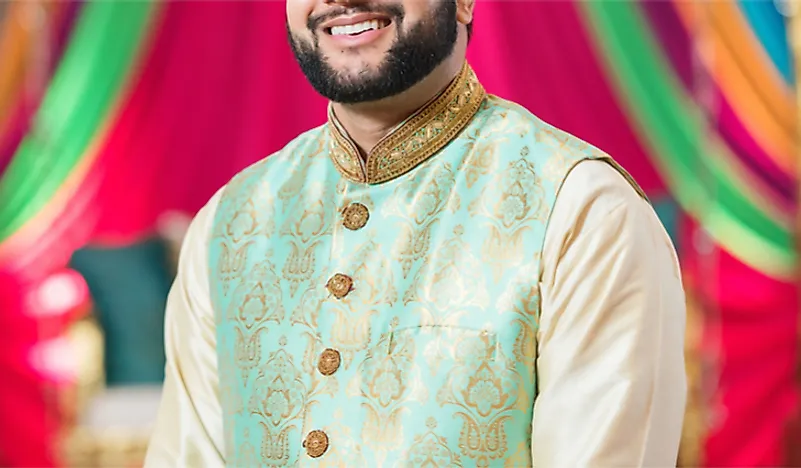
Pakistan is the sixth-most populous country on Earth with over 212 million people. The South Asian country is divided into two autonomous territories, four provinces and one federal territory with each region having its unique traditional clothing. The traditional attire of every regional culture reflects on their way of living and weather conditions. The traditional Pakistani attires have been heavily influenced by various cultures for thousands of years, and they are considered to be the legacy of the ancient civilization. Some of the most common Pakistani attires include:
10. Saraiki Turban
The Saraiki community is an ethnolinguistic group of people residing in the southeastern and central parts of Pakistan. The traditional dress of the Saraiki people is the Shalwar kameez which is usually accompanied by the Saraiki turban. The turbans worn with the Saraiki shalwar suits in the past were large and about 40ft long, but currently, there are numerous shorter designs.
9. Shalwar Kameez
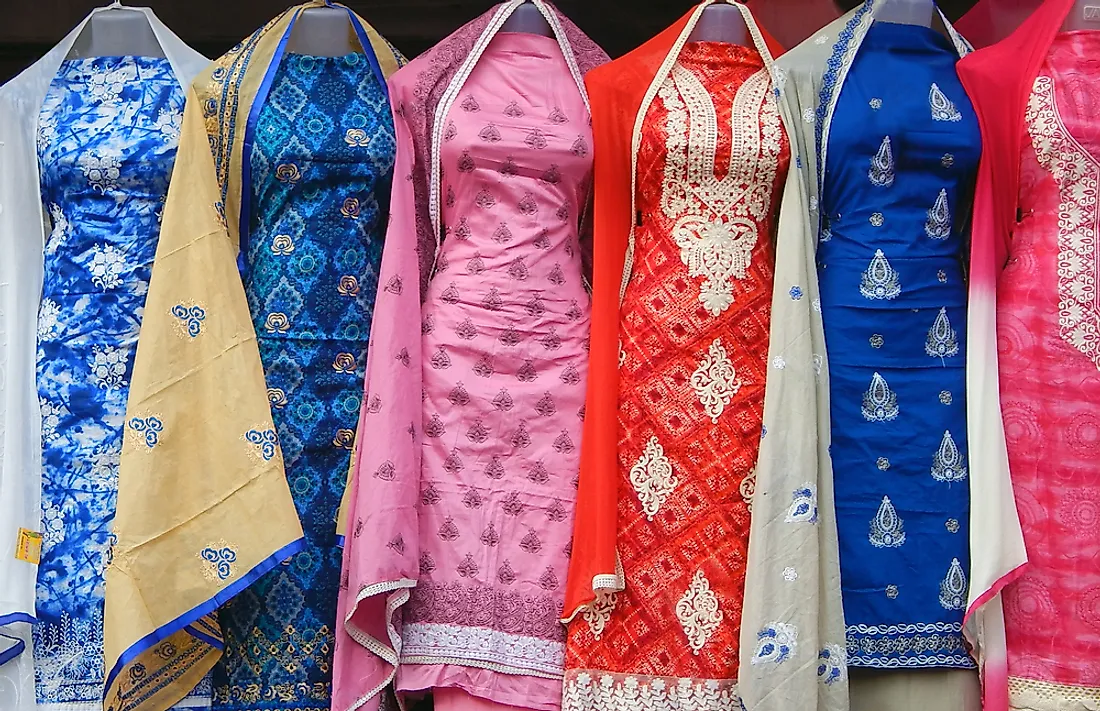
Shalwar kameez is the Pakistani national dress that is worn in the Indian subcontinent. The Kameez is available in different styles depending on where it’s worn. The attire includes a shalwar (buggy trouser) and a kameez (long shirt). Pakistani women usually wear their shalwar kameez with a scarf. The legs of the shalwar are narrow at the ankle and wide at the top. The Kameez is a long tunic or shirt with a western-style collar for males while for women it is usually collarless. The locals can wear a kameez with their pajamas for comfort or fashion.
8. Shindhi Cap
Sindhi cap also referred to as Saraiki topi or Sindhi topi is a unique hat that is very common in Sindhi province, Pakistan. A Sindhi cap is also worn by the Pashtuns, Baloch people, and Saraiki people. Sindhi cap together with Saraiki Ajrak is considered to be part of the Saraiki and Sindhi cultures. Sindhi is a cylindrical hat with a small section cut out to expose the forehead. Some of these hats have numerous small mirrors sewed on them. Sindhi cultural day is celebrated during the first Sunday of December every year.
7. Khussa
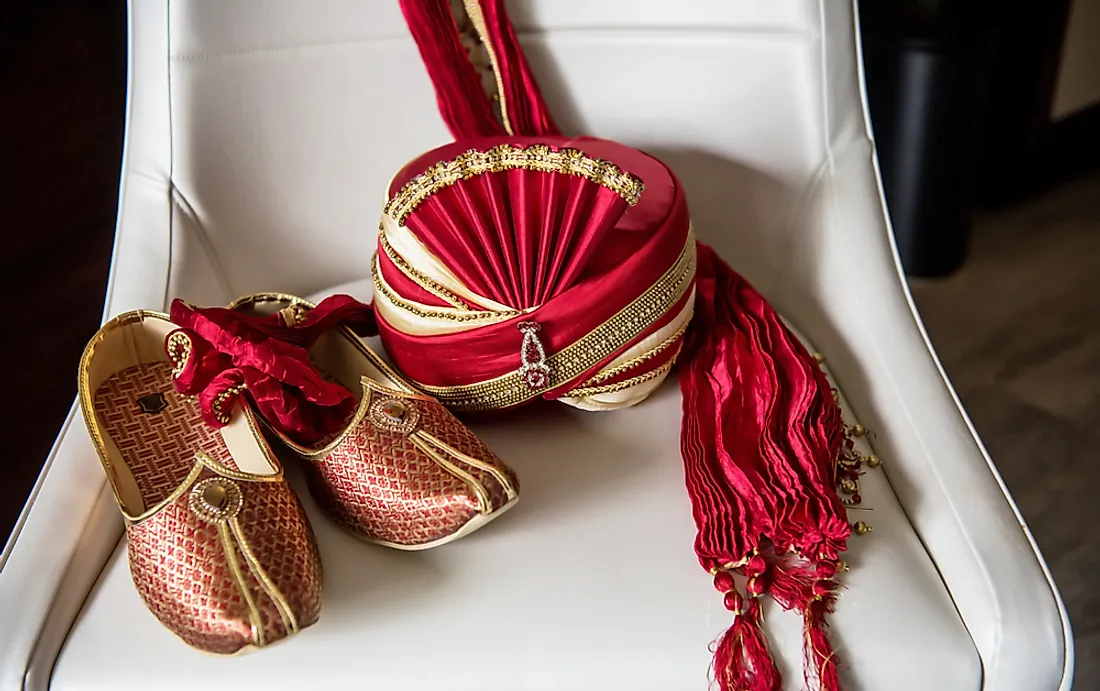
Khussa are stylish South Asian shoes that are made in Punjab, Pakistan. They are closed shoes with extended curled toes. The artisans make this footwear using vegetable-tanned leather. The upper part of the khussa is designed using a piece of textile or leather embroidered with ceramic beads, bells, mirrors, cowry shells, and brass nails.The upper part is bonded to the sole using a cotton thread that is eco-friendly. The khussa was quite common among the royalties during ancient times. The footwear varies in colors and designs.
6. Pashmina
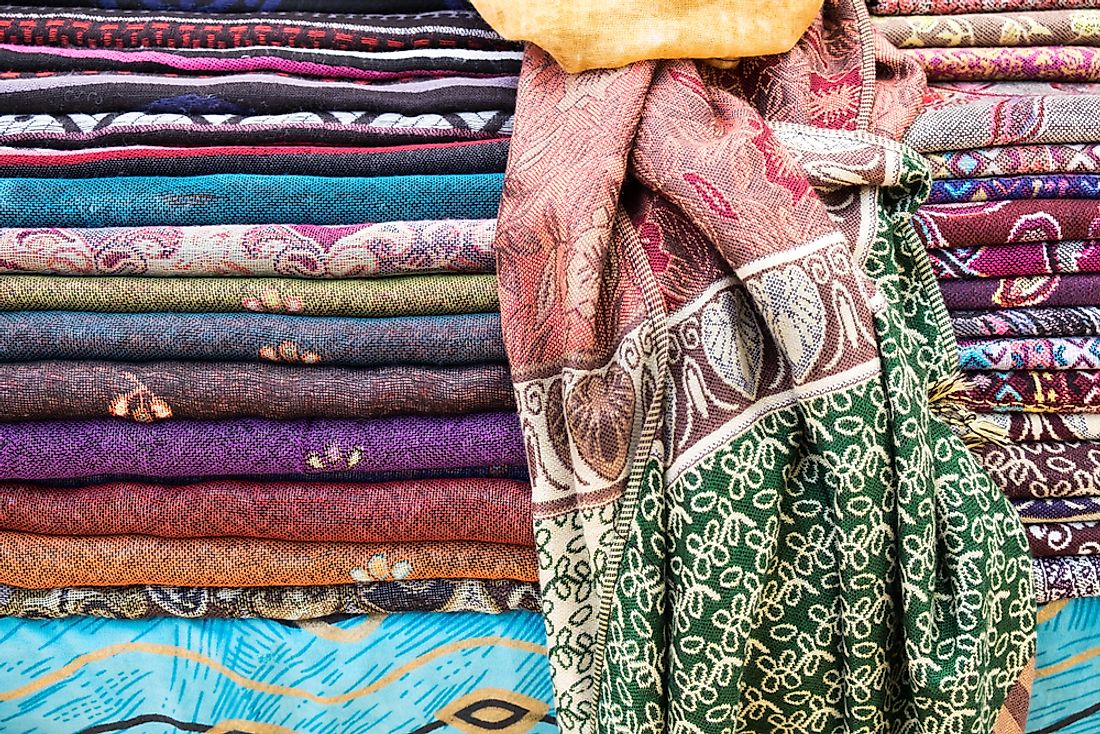
Pashmina is an excellent kind of wool that comes from different Cashmere goat breeds like the chyangara from Nepal, Maira from Kashmir, and chegu from the Himalayas. The term Pashmina is coined from the Persian word ‘’pasmina’’ which means ‘’made from wool’’. Pashmina was first made in Kashmir, and it is referred to as cashmere in American continents and Europe. The royalties and the elites have worn pashmina shawls for centuries in Pakistan. Pashmina blankets were part of a rich woman’s dowry in Nepal, Pakistan, and India. Zayn-ul-Abidin, the ruler of Kashmir during the fifteen century is believed to be the founder of the Pashmina industry.
5. Khet partug
Khet partug is a different kind of salwar kameez that is commonly worn in the northwestern and western parts of Pakistan and Afghanistan. The upper garment is known as the khet while the lower one is the partug. The khet resembles a robe or tunic, and it is usually tight at the waist. The khet reaches the knees, and it has wide sleeves. The khet is usually worn with a belt, and traditionally they don’t have slits. The partug has folds around the waist and it full of pleats.
4. Baloch
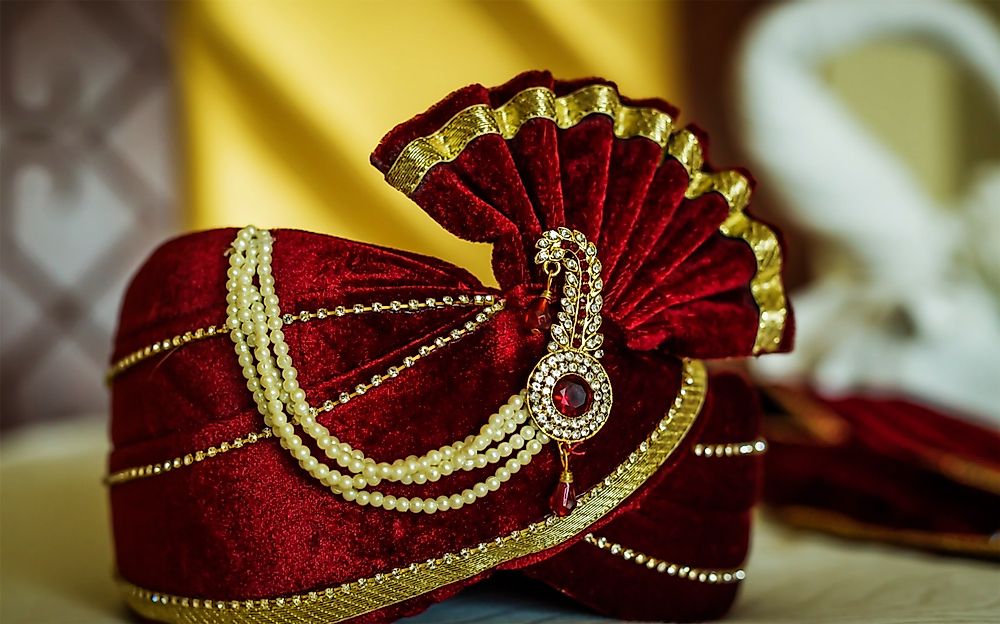
The Pakistani people from Baluchistan have various styles of turban, headscarf, shalwar, and kameez. The men’s Balochi shalwar kameez is made up of loose kameez and very baggy shalwar. The Baloch kameez is long-sleeved. The Baloch women’s attire is made up of a shalwar, long dress, and headscarf. The Baloch women wear loose dresses that are embroidered using local designs while the males wear numerous styles of turbans referred to as pagri.
3. Shalwar kameez
Shalwar kameez is a traditional attire that originated from the Indian subcontinent.Shalwar kameez is the Pakistani national dress which includes baggy trousers (shalwar) and a long shirt (kameez). The shalwar is quite common in the Muslim nations and various parts of the Greek countryside. The legs of the shalwar are narrow at the ankles and wide at the top. The long shirts can be either collarless or have the western type collars. The Pakistani men wear a sadri (vest) over their shalwar kameez while women add a scarf.
2. Churidaar Pajama
Churidaar pajamas are tight-fitting trousers that are quite common in the Indian subcontinent. The Churidar pajamas are narrow, and they reveal the shapes of the legs. The churidaars are naturally stretchy making them close-fitting. Churidaar is made longer than the leg of the wearer and at times can have a buttoned cuff at their ankles. The extra length creates folds on the ankles which look like some bangles on the ankles. The additional material makes it possible for the wearer to bend his/her feet when sitting.
1. Lehenga Choli
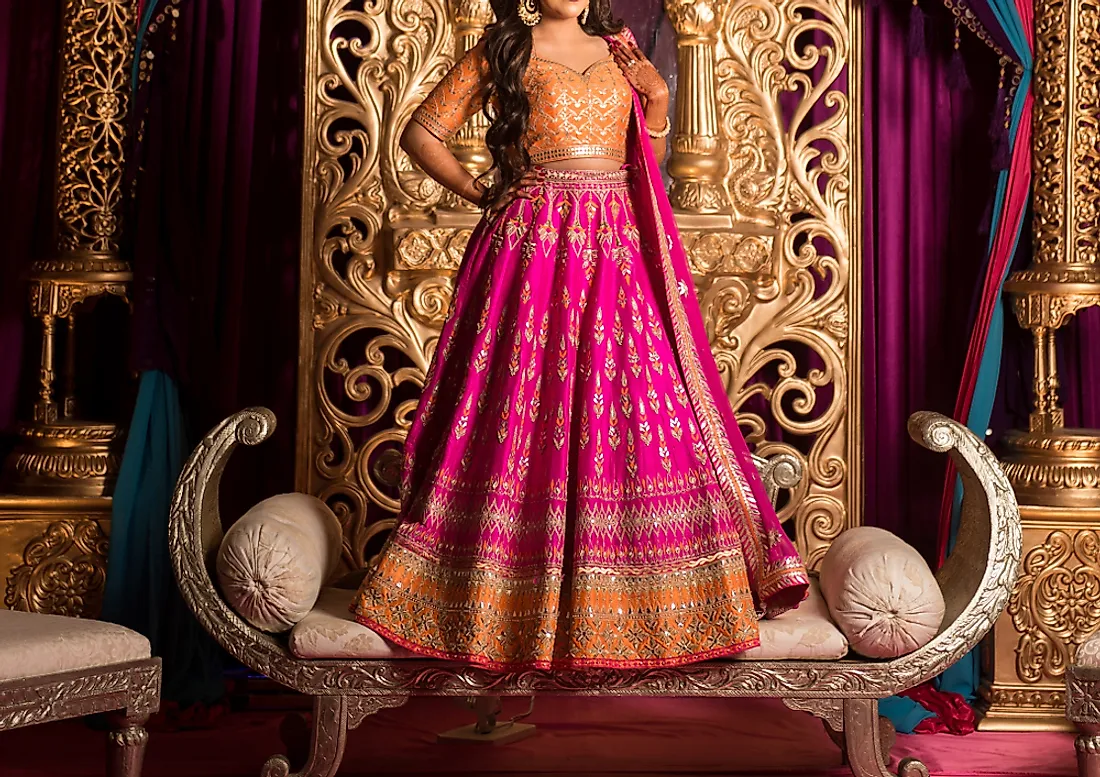
Ghagra choli evolved from a 3-piece dress worn in ancient India which included a stanapatta (chest band), uttariya (veil), and an antriya (lower garment). A choli is a midriff-baring top which evolved from the stanapatta and is worn with sari in various nations in the Indian subcontinent. The choli reveals a woman’s navel. The gagra is a long, pleated and embroidered skirt that is secured at the hips leaving the midriff and lower-back exposed. The choli and gagra are usually accompanied by a scarf known as the dupatta which evolved from the uttariya.











